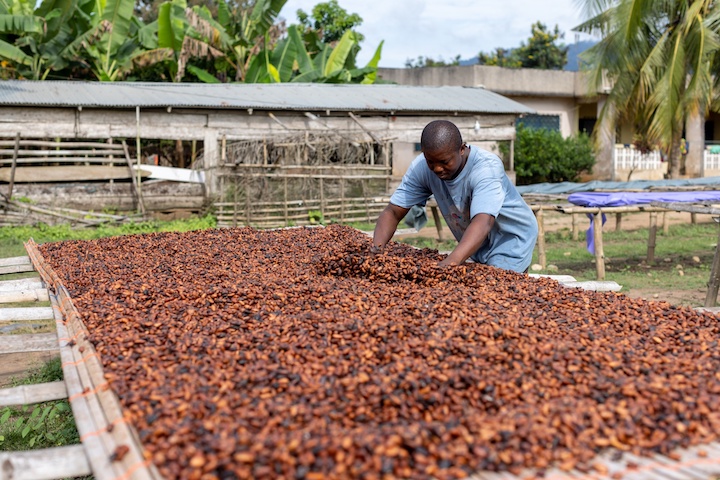Ghana’s low cocoa crop hammers trade surplus in first two months
Ghana’s smaller cocoa harvest has hit the country’s external payments position as its trade surplus fell by more than half in the first two months, posing a risk to the cedi currency.
The West African nation’s trade surplus narrowed by 54% from a year earlier to $392.8 million for Jan-Feb, the Bank of Ghana said in a summary of economic and financial data posted on Friday. Revenue from cocoa exports fell by almost a third to $508.4 million, the central bank said.
The developments come even after New York cocoa futures prices have more than doubled this year to $8,939 a ton, spurred by a decline in production across the key growing region of West Africa. Adverse weather, disease and a shortage of fertilizer has curbed output, setting up the global market for a third straight year of cocoa bean shortages.

Ghana’s cocoa harvest in the 2023-2024 season which ends in September is expected to be 650,000 tons to 700,000 tons versus an initial forecast of 850,000 tons, according to the Ghana Cocoa Board.
The revenue decline for the world’s second-biggest producer of the chocolate ingredient - behind Ivory Coast - will deepen the woes of the cedi, which has already lost 8.3% of its value to the dollar this year to be the third-worst performer among 24 African currencies tracked by Bloomberg. The cedi weakened by 0.2% to 13.045 per dollar on Friday.
Below are other key economic and financial indicators in the Bank of Ghana report:
- Total exports in the first two months of 2024 rose 1.6% to $2.9 billion y/y; imports increased 26% to $2.5 billion.
- The value of gold exports rose 16.6% to $1.3 billion; oil shipments advanced 12.4% to $620 million.
- Gross international reserves grew 4.6% to $6.2 billion; reserves were enough to cover 2.8 months of imports, unchanged from a year ago.
- The budget deficit in 2023 narrowed to 3.3% of gross domestic product from 8.3%.
- Public debt, defined to exclude state-owned enterprise loans, increased to 610 billion cedis ($46.76 billion) in 2023 from 446.3 billion.
- Debt as a ratio of GDP eased to 72.5% versus 73.1% y/y.
- Banks’ total loans increased to 74.8 billion cedis at the end of February, from 73.5 billion a year earlier.
- Annual loan growth slowed to 1.8% from 30.7% a year earlier.
- Capital adequacy ratio rose to 13.6% from 12.6%.
- Non-performing loans rose to 24.6% from 16.6%.
- Monthly mobile-money transactions increased to 195.8 billion cedis in February from 134 billion cedis a year earlier.
Similar Stories
United States and Norway issue innovative report creating greater transparency in critical mineral supply chains
Today, the U.S. Department of Commerce and the Norwegian Ministry of Trade, Industry, and Fisheries issued a thorough, innovative report presenting our shared understanding of non-market policies and practices (NMPPs)…
View ArticleDecember CNBC/NRF retail monitor results show strong growth boosted by final Thanksgiving weekend days
Retail sales jumped strongly in December, boosted in part by two busy holiday shopping days during Thanksgiving weekend falling in the final month of the year, according to the CNBC/NRF…
View ArticleNAW presents Dirk Van Dongen Lifetime Achievement Award to Bergman, CEO of Henry Schein, Inc.
At the 2025 NAW Executive Summit Gala on January 28 in Washington, D.C.
View Article
St. Louis region’s chemical industry welcomes new investment
View Article
Navigating compliance: Adapting to changing Customs regulations in global supply chains
View Article
December 2024 U.S. Transportation Sector Unemployment (4.3%) Was the Same As the December 2023 Level (4.3%) And Above the Pre-Pandemic December 2019 Level (2.8%)
View ArticleGet the most up-to-date trending news!
SubscribeIndustry updates and weekly newsletter direct to your inbox!





